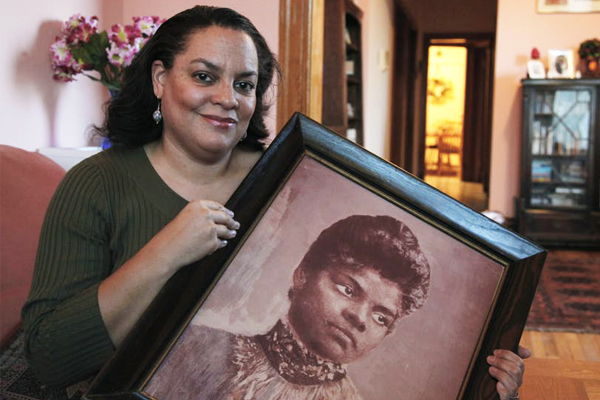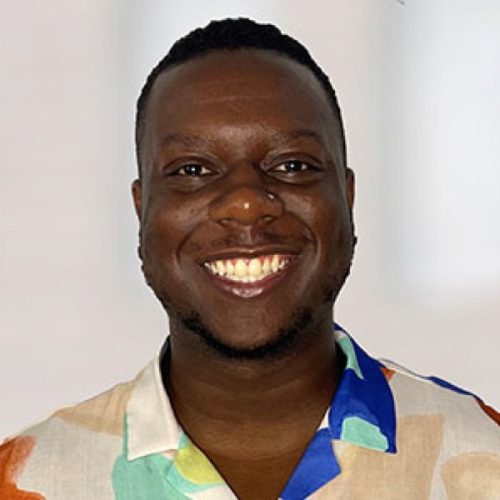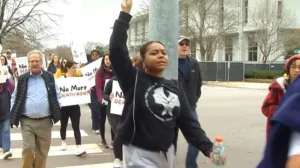Michelle Duster is a prolific writer, author and lecturer. Those assets have fueled her sustained mission as the keeper of the light and legacy of her great-grandmother Ida B. Wells, one of our nation’s most renowned suffragists and racial justice leaders. This Suffrage Unerased interview explores Duster’s mission and challenges in protecting the Ida Legacy.
With all the research and historical data that has surfaced about your great-grandmother Ida B. Wells, tell us something that most people don’t know?
Everyone familiar with Ida B. Wells knows that she championed the anti-lynching cause, but not many are aware of some of the individual cases she took up. After Reconstruction, very few Black men were appointed to government positions of authority. Many who did suffered the wrath of racist violence and torment. One such case is that of Frazier B. Baker, appointed postmaster in Lake County, South Carolina in 1897. Despite threats and intimidations, he refused to quit. The consequences: in February 1898 in the dead of night, a White mob set fire to the Baker home, stood by to watch the blaze that killed Baker and his infant son. And as a parting shot of hate, they wounded his wife and five children in a hail of gunfire.
Leaders in Chicago at a mass meeting after the incident enlisted Ida B. Wells-Barnett to seek justice from the federal government for the Frazier family. With her five-month old son Herman, who was still nursing in tow, my great-grandmother left her toddler Charles and her husband Ferdinand and went to Washington, DC. for more than a month. She met with members of Congress who arranged for her to speak to President William S. McKinley at the White House. She urged the president to make lynching a federal crime, which meant that the federal government would investigate these cases versus it being left to local authorities. Although the federal government did almost nothing to investigate the Baker case, 13 men were charged with murder. But in the end, no one was punished for the crime. Charges against two of the accused were dropped and the case against 11 others ended in mistrial by an all-white jury.
In 2019, 121 years after the murder, a post office was named in honor of Frazier Baker.
While other family members have been involved in carrying on the Ida legacy, you have emerged as the most prominent representative through research, writing, and storytelling. For you it has become a mission-driven career? What motivated you to take on this work?
Four generations of my family have been involved in carrying on the legacy of Ida B. Wells, but we have focused on different aspects of her work and used them to educate different target audiences. My grandmother edited and published her mother’s autobiography in 1970, which I think set the foundation for all activities that followed. My father’s generation started The Ida B. Wells Memorial Foundation in 1988. My brother, Dan Duster, conducts training sessions and workshops with Chicago Public Schools and youth groups that incorporate the life experiences and lessons of Ida. A younger cousin, Tiana Ferrell (a great-great-granddaughter) wrote and produced a play titled The Ladies Car about Ida’s lawsuit against the Chesapeake Ohio & Southwestern Railroad. What propelled things to a whole new level was the March 8, 2018 Overlooked series by The New York Times. Not only did I receive an enormous amount of personal inquiry, but then I was asked to do the voiceover for the podcast which was released a week later on March 16. My life has never been the same since that day.
It was never my deliberate intention to specifically carry on Ida’s legacy. I was focused on generating revenue for the Foundation and raising money for the monument which fit into my interest of promoting the positive contributions that Black women have made to the United States. I had worked in too many environments where I saw a lack of realistic and balanced representations of Black women. Our voices, our experiences, our talents were marginalized or exploited so I felt compelled to fight for us to be seen and celebrated. In fact, in 2018 an anthology that I co-edited about Michelle Obama was published.
I did not have a name for what my interest was, but I understand now that it is called public history. My plan is to tell the truth about the Black experience through writing, images and cultural projects.
Ida B. Wells is your ancestor on your father’s side. Have you done any research regarding family lineage on your mother’s side? If so, tell us about what you’ve found.
My mother’s side of the family is large, and we have managed to maintain a close-knit relationship spanning several generations. The Porter family was originally enslaved in Tennessee. They were moved to Texas before the Civil War and settled in an area near Dallas. After the Civil War ended, three brothers were able to secure the land. From that point forward my family has worked the land and held on to it as tightly as possible. The farming community has always consisted of almost all family.
My mother and other relatives put together a family tree that includes seven generations of our family. They dug up old pictures and with the help of older relatives, identified the names of the people in the photos. They looked through birth certificates, death certificates, marriage certificates, cemetery records, land records, county records and historical societies to put the pieces together of our family story.
One year I created a t-shirt and poster that included all of the names from seven generations of our family. Another year a cousin (who is an avid researcher) and I created a book that captured our entire family history. It truly is a multi-generational and multi-people effort to compile and document our family history. Several family members established a small museum in my mother’s hometown of Pelham, Texas. We created cookbooks with old family recipes, stories and quotes about scores of relatives. And close to 100 of us return to the family-owned land every two years. We also stay connected with an email list and a private family Facebook page.
What are some of the unseen challenges about being a descendant of an historic icon?
As a descendant of a famous person, you have to share your family member with the general public. There are frequent inquiries from scholars, filmmakers, journalists, students and others to learn something new about your family member. There are expectations that you will attend events that honor your ancestor and/or interact with the press about them. Sometimes meeting these expectations is not possible because there are only so many hours in the day.
Unfortunately, some try to misuse, or profit off of the name and image of your family member. It can be jarring to walk into a store or look online and see a t-shirt or other products with your family member’s image, appropriated without your knowledge or consent. This has demanded legal vigilance, to protect copyrights, trademarks and other rights of an estate. It can be emotionally challenging and time-consuming to juggle protecting the legacy of an ancestor while also managing your own life, career and/or family.
Most of us don’t have an ancestor as famous as Ida B. Wells, but we all have a grandmother or great-grandmother with a story and legacy. What tips can you offer to those of us who want to explore and keep our family legacy alive?
My aunts and cousins have used the following resources to research and chronicle our family story. Here’s a useful checklist.
- Interviewing older relatives
- Identifying people in family photos
- Looking at birth certificates, death certificates, marriage certificates, census records, cemetery records, historical society archives, county records
- www.findagrave.com
- HeritageQuest.com
- Ancestry.com
- Library of Congress (loc.gov and findingaids.loc.gov)
- State Department of Archives (www.mdah.ms.gov/new/research/genealogy)
My friend, Tony Burroughs also provides A Beginner’s Guide to tracing your family tree that is worth consulting.





